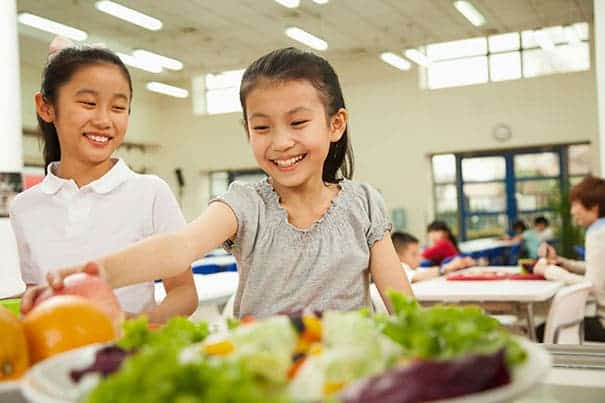Children nutrition in schools in the US has a big problem – not only are the kids not eating enough fruits and vegetables (which leads to health issues later on in life), but a study has shown that kids waste millions of dollars every day by throwing away the fruits and veggies. Now, a new study has found that a no-cost trick could greatly improve that: just have recess before lunch – not after.
I used to love recess when I was in school; to be honest, it was my favorite thing about school for a long time. Most kids are like that – they can’t wait to get outside and play and talk to their friends. Of course, if you had to choose between playing and eating, most kids would clearly prefer the former; after all, eating is no fun.
“Recess is a pretty big deal for most kids. If you have kids choose between playing and eating their veggies, the time spent playing is going to win most of the time,” said Joe Price, an economics professor at Brigham Young University. “You just don’t want to set the opportunity cost of good behaviors too high.”
In other words, it costs them something – precious play time. Switch around that time, and they will start eating more fruits and veggies. Price is the lead study author and collaborated with Cornell’s David Just for this study. They had three schools in in a Utah school district (grades 1-6) switch to recess before lunch and monitored them. They also monitored normal schools, who stuck to the old schedule.

For four days in spring and nine days in the fall, they measured how much healthy food was wasted by standing next to the trash cans and recording the number of servings of fruits and vegetables that each student consumed or threw away. They also measured whether or not the students actually ate the fruits. After analyzing 22,939 data points, the researchers concluded that in the schools that switched recess to before lunch children ate 54% more fruits and vegetables.
There was also a 45% increase in those eating at least one serving of fruits and vegetables. When this doesn’t happen and kids don’t have a balanced meal at school, their academic performance can drop. This can also lead to excessive snacking which of course can, in time, lead to obesity and a myriad of health related issues. Because moving recess is a no-cost way to make kids healthier and make the school meal program more successful, Price and Just recommend that every school do the switch.
“Increased fruit and vegetable consumption in young children can have positive long term health effects. Additionally, decreasing waste of fruits and vegetables is important for schools and districts that are faced with high costs of offering healthier food choices.”
This is the kind of study which will leave policy makers wondering “Why didn’t I think of this sooner?”.
Journal Reference: Joseph Price, David R. Just. Lunch, recess and nutrition: Responding to time incentives in the cafeteria. doi:10.1016/j.ypmed.2014.11.016






